DV Breeding for Shinies
As described in the Basics of Shiny Hunting guide, shininess in generation 2 is determined by a Pokémon's Determinant Values, or DVs. It just so happens that some DVs are passed down to Pokémon offspring while breeding, allowing much greater chances of hatching a shiny Pokémon. By breeding, the intimidating 1/8192 shiny odds can go up to a staggering 1/64!
How do I breed Pokémon?
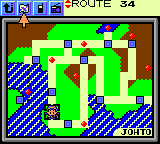
The player can breed two Pokémon together by heading to the Daycare on Route 34 right below Goldenrod City and leaving the two parents with the Daycare Man and Daycare Woman. It costs a small fee to retrieve them later. The retrieval fee gets higher the longer they stay, as every step walked after depositing them at the Daycare gives an experience point to the Pokémon. The Daycare will also overwrite a Pokémon's moves if it learns one through level-up while it's there, so make sure neither parent has moves you definitely don't want to lose, or level it high enough so it doesn't have any moves left to learn!
To breed two Pokémon together, the following have to be true:
- Neither parent is in the "No Eggs" Egg Group (Legendaries, baby Pokémon, and Nidorina/Nidoqueen)
- One parent is male and the other is female*
- Both parents share an Egg Group together*
- The parents are not both Ditto
*The exception to both of these rules is Ditto, who can breed with any gender of parent including genderless, and can breed with any Egg Group other than No Eggs.
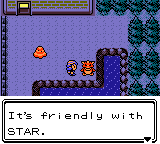
The offspring will always be the species of the female parent, or the parent that is not Ditto if using a Ditto parent. As such, Ditto can never be hatched in an egg despite being capable of being a parent. Also keep in mind that due to how DVs also determine gender, female Pokémon with a 12.5% female gender ratio (All the starter Pokémon, the entire Eevee line, fossil Pokémon, Snorlax, and the Togepi line) cannot be shiny. Only male offspring with that gender ratio are capable of being shiny.
Once two Pokémon are compatible, talking to either Pokémon out in the yard will prompt the game to display one of the following lines of dialogue, which inform the player of how often those two Pokémon will have eggs together. The messages are as follows:
| Species | Original Trainer | Message | Egg chance per 256 steps |
|---|---|---|---|
| Same | Different | "It appears to care for (other parent)." | 31.25% |
| Same | Same | "It's friendly with (other parent)." | 15.63% |
| Different | Different | "It's friendly with (other parent)." | 11.72% |
| Different | Same | "It shows interest in (other parent)." | 3.91% |
| Parents are incompatible | "It has no interest in (other parent)." | 0% | |
| Both parents share their Defense DV and their Special DV differs by 0 or 8 | "It's brimming with energy." | 0% | |
Once an egg has spawned from taking enough steps, the Daycare Man will stand outside in the yard and will give an egg to the player once spoken to, assuming there is room in the Party for one. The fastest way to collect eggs is to bike up and down the road directly to the left of the Daycare and release them with the PC inside of the Daycare as soon as they hatch and are not shiny to make more Party space. The amount of time it will take for eggs to hatch depends on the Pokémon species.
Okay, now how do I get a shiny egg?
While breeding, the offspring always inherits a couple of DVs from either the opposite-gendered parent or if breeding with a Ditto parent, always from the Ditto. The Defense DV has a 100% chance of passing down exactly as-is, and the Special DV has a 50% chance of passing down exactly as-is or a 50% chance of being added to/subtracted by 8. You may recall that a shiny Pokémon requires a Defense DV of 10 and a Special DV of 10. By ensuring that the parent passing down its DVs has a Defense DV of 10 and a Special DV of either 10 or 2 (2 + 8 = 10, so while passing down Special it has the same chance of giving the offspring a DV of 10), it severely cuts down on the amount of luck needed for a shiny Pokémon, as now the only fully random stats are Attack and Speed! A Pokémon parent with these Defense and Special DVs, regardless of if it is shiny or not, can be considered to have the shiny gene.
The shiny gene can be obtained on a Pokémon naturally via two methods, or unnaturally through a glitch via one method (more on that later). As for natural ways, either the player can randomly stumble on a wild Pokémon with the necessary DVs (a 1/128 chance) or, much more easily, the free shiny red Gyarados at the Lake of Rage in every GSC game that always has the proper shiny gene DVs due to being shiny can be used for this purpose. Even though Gyarados can only directly be used to shiny hunt Pokémon in its own Egg Group, the shiny gene can be passed down to Pokémon outside its Egg Group by chain breeding.
For instance, let's say the player wants to obtain a shiny Eevee through breeding. The following chain can be performed:
| Parent 1 | + | Parent 2 | = | Offspring | Odds |
|---|---|---|---|---|---|
|
|
+ |
|
= |
|
1/2 |
|
|
+ |
|
= |
|
1/2 |
|
|
+ |
|
= |
|
1/8 |
|
|
+ |
|
= |
|
1/64 |
This is only an example, and you can make chains out of any Pokémon sharing an Egg Group to get nearly any shiny you want! The Ekans line is almost always a perfect start to a Gyarados chain.
What are my odds?
With the exception of using a Ditto with the shiny gene, the gender ratio of the offspring determines how often the offspring will inherit the DVs of the parent with the shiny gene. As such, a Pokémon with a 50% male gender ratio will be less likely to be shiny from a female shiny gene parent than a Pokémon with a 87.5% male gender ratio, which inherits the DVs from the female parent much more often.
| Chance of DV Inheritance | Shiny Odds |
|---|---|
| 100%* | 1/64 |
| 75% | 3/256 (roughly 1/85) |
| 50% | 1/128 |
| 25% | 1/256 |
| 87.5% Male | 1/64 |
| 12.5% Female | Cannot be shiny |
*Ditto always passes down its DVs to offspring regardless of gender, so any Pokémon paired with a shiny gene Ditto will have a 1/64 chance of being shiny.
The calculator below can be used to figure out if two Pokémon are compatible, and if so, what the chances of them producing a shiny Pokémon egg together is. It accounts for all situations and egg groups. The sprite of the shiny gene parent is shown as shiny here, but remember, the shiny gene parent just needs to have the shiny gene and does not have to be shiny itself!
Shiny Gene Parent
Other Parent
N/A
Gender:
N/A
Gender:
N/A
Ditto seems to be the easiest parent to shiny breed with. How do I get a shiny gene Ditto?
The natural way to get a shiny gene Ditto is to run around in the grass, mass-catch Dittos in any generation 1 or 2 game, and use an online DV calculator to determine their DVs until one just so happens to have the gene. However, there is a much easier way through use of a glitch, assuming you have a generation 1 game to use and enough hardware to trade between your generation 1 and generation 2 games. By getting a wild Ditto to use Transform twice on a Pokémon with the shiny gene, it will permanently copy the player Pokémon's DVs instead of temporarily, even after being caught, giving a Ditto with the shiny gene! This glitch is not dangerous and cannot harm your save file.
To pull off this glitch easily, simply walk through the following steps:
- Catch the shiny red Gyarados at the Lake of Rage in your generation 2 game. When caught it should not have any generation 2 exclusive moves, but if you happened to have taught it any, delete them in Blackthorn City with the Move Deleter in the house west of the PokéMart.
- Trade the Gyarados back to your generation 1 game and teach it Mimic through TM. Don't worry, it will still be shiny when traded back to generation 2! Mimic is TM31 which can be obtained once per save file in Saffron City after giving the Copycat NPC a Poké Doll. She can be found in the upstairs of a building there.
- Go to any location that Ditto can be found, run around until you find one, and use Mimic with Gyarados to copy the move Transform. In generation 1, Mimic lets you pick which move out of the opponent's moveset to copy regardless of if they've already used the move or not, so this can be done first turn. Gyarados needs to be faster and go first for this to work smoothly, so it is advisable to go to a location with Ditto at lower levels. Route 15 in Red/Blue and the basement of the Pokémon Mansion on Cinnabar Island in Yellow are optimal for this.
- Ditto will use Transform and therefore copy the move Transform onto its own moveset again due to you Mimicking it already. Use moves until the opposing Ditto uses Transform against Gyarados a second time. If your Gyarados somehow faints, revive it and try again.
- After Ditto has used Transform twice on your Gyarados, the glitch is active! It has permanently copied Gyarados' DVs. Capture your new shiny Ditto!
- Once caught, trade the Ditto (and optionally your Gyarados) back to your generation 2 game. You will notice that the Ditto is a bright blue shiny instead of purple, and therefore has the shiny gene! This Ditto can now be used as a shiny DV breeding parent.
Hatching eggs feels slow. Is there any way to speed this up?
This is just a general overview of this method. For more information on Stadium 2's hue shifting feature, refer to the page on Stadium's Color Changing Pokémon.
Egg hatching in generation 2 is a bit slower than modern games, but keep at it, the high shiny odds are definitely worth it! However, for those very passionate about generation 2 and with a copy of Pokémon Stadium 2 on the Nintendo 64, there is a very niche way to speed up the DV breeding method. It takes a lot of preparation, but once prepared, will be ready to go forever. It's also interesting on a technical level so even if you aren't planning to do it, you may be interested in a read!
To get most optimal shiny DV breeding speeds, the player must first clear the entirety of Stadium 2's Round 1 and Round 2, defeating all of the Stadium Cups and the entire Gym Leader Castle in both rounds. This will unlock the Dodrio Game Boy, allowing copies of Gold, Silver, and Crystal to be run at 3x their usual speed in the Game Boy Tower mode, which emulates the games through the use of the Transfer Pak accessory attached to the N64 controller. Technically, this method can be used with just the Doduo Game Boy from completing half of Round 2 or neither at all right out the gate, but with neither it's hardly a speed increase and by the time the Doduo GB is obtained there's no reason not to make the final push for the Dodrio GB. This is time consuming and challenging but the reward is one of the easiest shiny hunting methods in any Pokémon game.
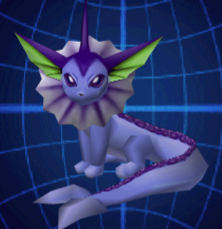
Of course, just being able to hatch eggs at 3x the speed is already a massive timesave, but not only is it a bit annoying to have to check Pokémon summaries for the shiny sparkle icon due to the Dodrio GB forcing the games into grayscale, Stadium 2 has a unique feature that speeds up this process even faster. In Stadium 2, nicknamed Pokémon change color! When using Pokémon from a generation 1 or 2 Pokémon game through the Transfer Pak, if nicknamed, the player's Pokémon will be either wildly or subtly hue shifted due to an internal formula that compares the nickname with the player's Trainer ID and name and spits out a color value. At its most extreme, this can end up with results like a purple Vaporeon with green headfins. This doesn't sound like it should be able to help with shiny DV breeding, but it does due to one oversight: "Egg" is considered a nickname by the game.
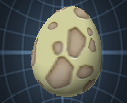
Even while a Pokémon is still in its egg, the species data of what that Pokémon will hatch into is kept inside. When Stadium 2 sees an egg in the PC while using the Pokémon Lab feature to view and organize Pokémon, it is aware of the species of the Pokémon inside despite it displaying an egg's 3D model. "Egg" is obviously not the name of that species, and since it differs, it is considered a nickname. Nicknamed Pokémon have their 3D models hue shifted and eggs are no different. If the player has eggs of different Pokémon species, those eggs will be different colors from one another. The reason this is useful is because shinies do not change in color from Stadium 2's hue shifting feature. All shiny Pokémon will always look identical to each other, nicknamed or not. As such, this also applies to eggs, which just so happen to have the offspring's DVs set already while unhatched. Therefore, an egg containing a shiny Pokémon will always be the default tan color, no matter what.
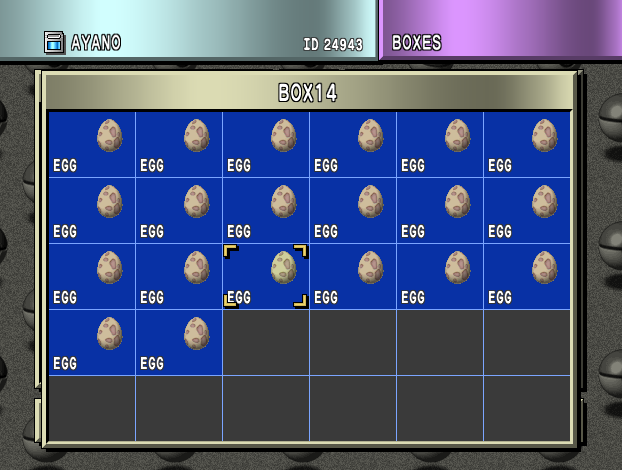
With all of this in mind, a player can use the Dodrio GB to bike up and down and fill their PC with boxes of eggs as fast as possible without hatching them, and then save the game, exit to the Pokémon Lab, and view those eggs en masse. All of the eggs will be hue shifted except for any shinies, which will be tan. Any shiny eggs can then be put into the player's party and hatched at high speed through the Dodrio GB. The non-shiny eggs can then be easily released through the Pokémon Lab instead of having to hatch them one-by-one. This makes the shiny DV breeding method an absolute cakewalk for players dedicated enough to set it up.
It's important to keep in mind that sometimes, an egg's hue shift can be so subtle that it's barely distinguishable from the default tan color, even when right next to a shiny egg. If the player really cannot tell the difference, they can just use the Dodrio GB to hatch eggs quickly in their generation 2 game instead, though the Shiny Egg Hue Previewer exists to help with that problem.
Credits
Thank you to the following people and resources for assistance with researching this topic:
- Fëanen for his research on Stadium 2's hue shifting feature, which was previously highly unexplored.
- Tama Hero for being the first person to bring the Stadium 2 breeding method to my attention with her YouTube video on the subject!
Last updated 10/8/23. Updated the Stadium 2 breeding section with links to new resources on the subject.